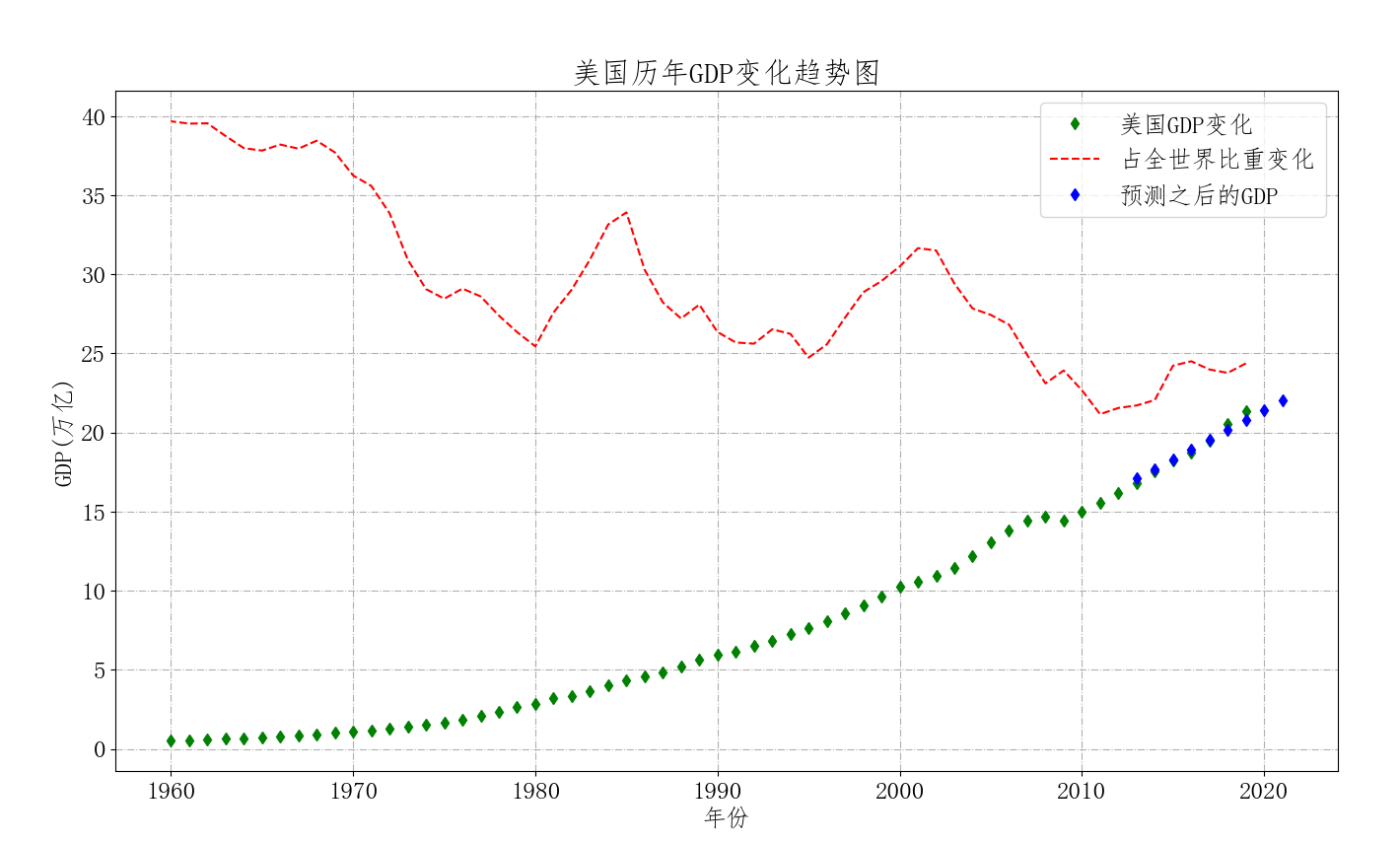import requests import openpyxl import matplotlib.pyplot as pl import numpy as np from lxml import etree from sklearn.preprocessing import PolynomialFeatures #多项式 from sklearn.linear_model import LinearRegression #线性回归 def get_html(url): content = requests.get(url) return content.text def parse_content(content): e = etree.HTML(content) year_list = e.xpath('//tr/td[1]/text()') # xpath表达式 gdp_list = e.xpath('//tr/td[2]/text()') percent_list = e.xpath('//tr/td[3]/text()') year_list = list(filter(delete_char, year_list)) year_list = list(map(int, year_list)) gdp_list = list(map(extract_value, gdp_list)) percent_list = list(map(delete_percent, percent_list)) gdp_list = list(map(lambda x: x / 1000000000000, gdp_list)) print(year_list) print(gdp_list) print(percent_list) return year_list, gdp_list, percent_list # save_data_to_excel(year_list,gdp_list,percent_list) def extract_value(s): return int(s[s.find('(') + 1:s.rfind(')')].replace(',', "")) def delete_percent(s): return float(s.replace('%', "")) def save_data_to_excel(year_list, gdp_list, parcent_list): wk = openpyxl.Workbook() sheet = wk.active for i in range(0, 60): sheet.append([year_list[i], gdp_list[i], percent_list[i]]) wk.save("gdp.xlsx") def delete_char(s): s = s.strip() if s: return s.isdigit() else: return False if __name__ == "__main__": print("Hello, World!") url = "https://www.kylc.com/stats/global/yearly_per_country/g_gdp/usa.html" content = get_html(url) year_list, gdp_list, percent_list = parse_content(content) pl.rcParams['font.sans-serif'] = ['FangSong'] pl.rcParams.update({'font.size': 18}) pl.figure(figsize=(16, 9)) pl.title("美国历年GDP变化趋势图") pl.grid(linestyle='-.') pl.xlabel("年份") pl.ylabel("GDP(万亿)") arr = np.array(list(zip(year_list, gdp_list, percent_list))) pl.plot(arr[:, [0]], arr[:, [1]], "dg", label="美国GDP变化") pl.plot(arr[:, [0]], arr[:, [2]], "--r", label="占全世界比重变化") # print(arr) # 预测 test_data = np.array([2013, 2014, 2015, 2016, 2017, 2018, 2019,2020,2021]).reshape((9, 1)) poly = PolynomialFeatures(degree=3) # 3次多项式 x_poly = poly.fit_transform(arr[7:, [0]]) liner_reg = LinearRegression() liner_reg.fit(x_poly, arr[7:, [1]]) # 训练模型 pred = liner_reg.predict(poly.fit_transform(test_data)) # 2013-2021年GDP值预测 print(pred) pl.plot(test_data, pred, "db", label="预测之后的GDP") pl.legend() pl.show()
